Home »
Misc »
How to teach press defense in basketball
How to teach press defense in basketball
How to Run an Effective Full-Court Press in Basketball
A well-drilled team running a full-court press is exciting to watch and can be devastatingly effective against any opponent.
When your players are all on the same page and rotating as one unit, the press will give you many advantages that can turn a game in your favor.
In this article, we'll take a look at several different things...
- The different types of full-court presses.
- The main reasons why you should use one.
- The negatives.
- When you should consider running a press.
- And much more.
But before we get started with all of that, let's go back to basics...
"What is a full-court press?"
When coaches say 'full-court press', they're talking about putting pressure on the opponent for the entire length of the court.
This is instead of sprinting back to the half-way line and setting up a half-court defense like many teams do.![]()
Two Main Reasons to Run a Full-Court Press:
1. To Create Turnovers
Let's start with the most obvious benefit...
Forcing the opposition into turnovers.
The more steals your team can get by running a full-court press, the more opportunities they'll have to score.
2. To Dictate the Tempo of the Game
Using a full-court press to dictate the tempo of the game is the benefit most often overlooked by basketball coaches...
Yet it could be the most important reason to use one.
Even if the press your team is running doesn't result in a steal, running one can force the opponent away from their strengths and make them play a style of basketball they're not comfortable with.
This is a huge win for the defense.
For example...
If you're competing against a team that likes to slow the basketball down and pass inside to a dominant post player, running a full-court press will force them to play faster and take more undisciplined shots early in offense.
When to Run a Full-Court Press:
A full-court press can be effective against anyone...
But using one against certain teams or in specific situations can give your team's full-court press a higher than normal chance of success.
Here are a few examples:
1. Against Teams With Poor Decision Makers
Dribbling and passing are the two most important skills for breaking a press and advancing the basketball up the court...
It should come as no surprise that a full-court press can be very effective against teams without quality guards who make smart decisions.
2. Against Teams With a Limited Bench
Playing against a full-court press is physically and mentally demanding.
It's challenging for both the offensive team and defensive team to compete full-court possession after possession.
This gives the team with a deeper rotation an immediate advantage as they're able to keep their team fresh by subbing players in and out without a loss in the quality of play.
3. Against Teams With a Great Half-Court Offense
A high-energy full-court press can be extremely effective against teams who like to slow the basketball down and run their half-court offense.
Using the same example as before...
Perhaps they have a dominant post player they like to isolate on the block.
Running a full-court press can speed up the game and take them away their half-court offense.
4. When Your Team Needs a Burst of Energy
Occasionally you will have games where your team looks tired and unmotivated to play hard.
Maybe they've already played 2 or 3 games that weekend or your team has just travelled to a tournament a long distance from your home town.
Either way, running a high-intensity full-court press can be a great way to change things up and snap your team out of a sluggish start.
5. When the Opposition Goes on a Run
If you experience a stretch where the opposition scores 6 - 8 quick points, use a full-court press to change the game.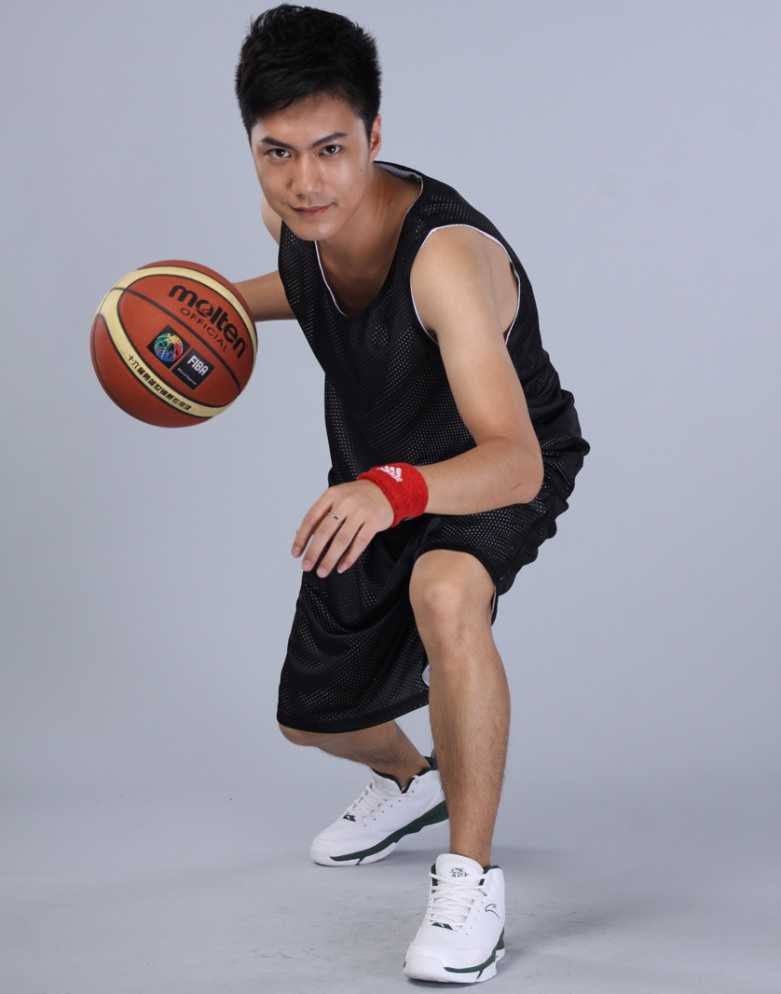
Allowing a small 6+ point scoring run can skyrocket the opposition team's confidence because they will think they have your team figured out...
Changing the defense and tempo is a great way mix things up and take control of the game again.
6. To Get the Ball Away From a Star Player
Sometimes your team will face a great point guard and you just want to get the basketball out of their hands..
Instead of allowing them to easily dribble up the court and set up the offense, a full-court press forces them to pass early.
As long as your team doesn't allow them to easily get the basketball back, it can force a different player to set up the offense and create scoring opportunities.
Negatives of Running a Full-Court Press:
But while there are many positives, it's not all sunshine and rainbows...
There are negatives to implementing a full-court press.
Make sure you're aware of these points when deciding whether or not to implement one on your basketball team.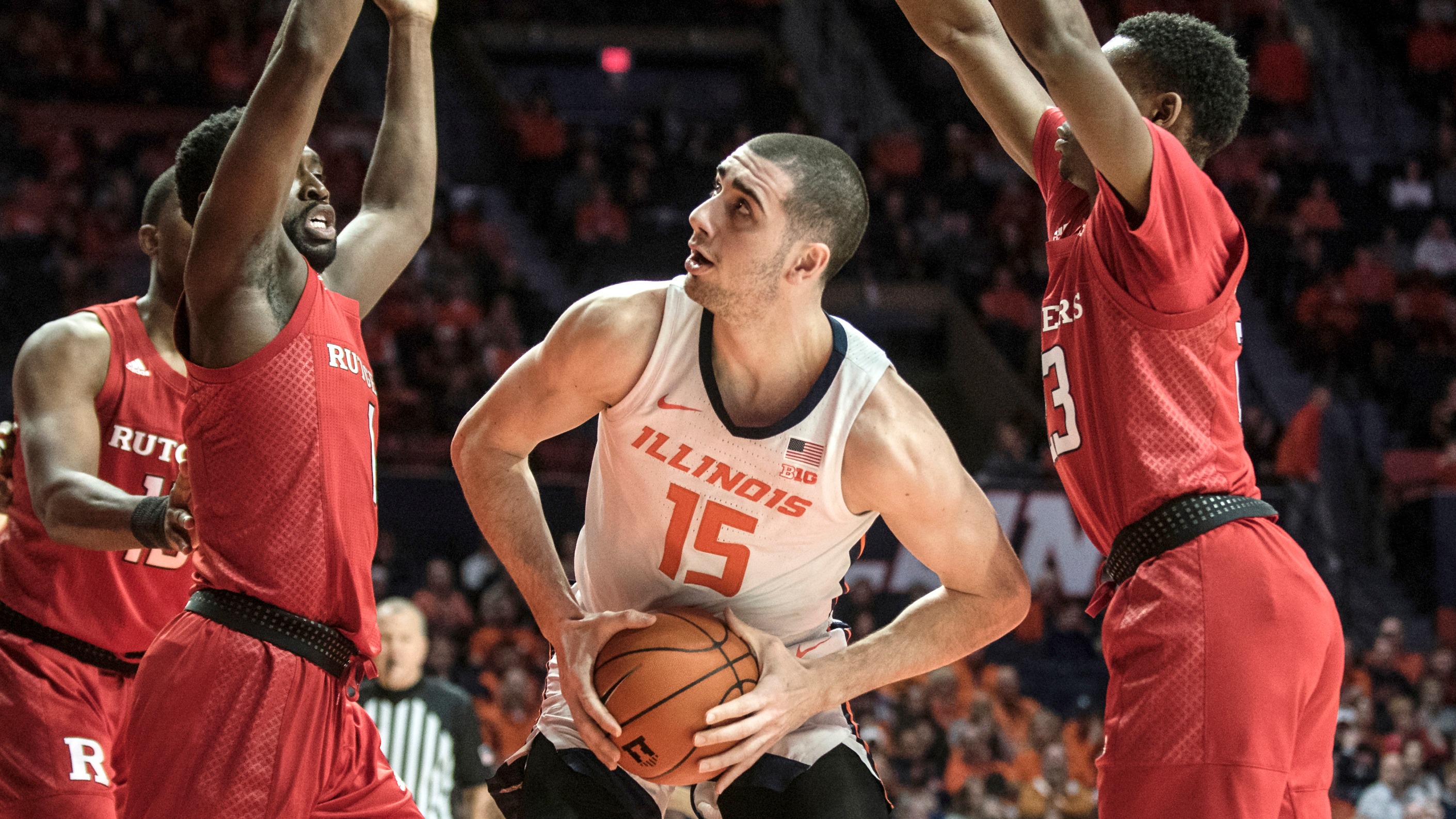
1. Bad For Youth Basketball
I won't go into too much detail on this topic (I'll save that for an entire blog post), but it's important to know that running a full-court press isn't great for the development of youth players.
There are a few main reasons for this:
- Youth players aren't strong enough to throw the basketball over the press.
- Youth players aren't strong enough to make hard, quick passes.
- Youth players don't have the experience or decision making skills to break a full-court press.
All 3 points above result in a youth defense being able to flood the front court without fearing a long pass over top and allowing a wide open layup.
This can result in steals for the defensive team simply because they're outnumbering the offensive team in the front court and taking advantage of their physical weaknesses.
This is not a good environment for learning and development.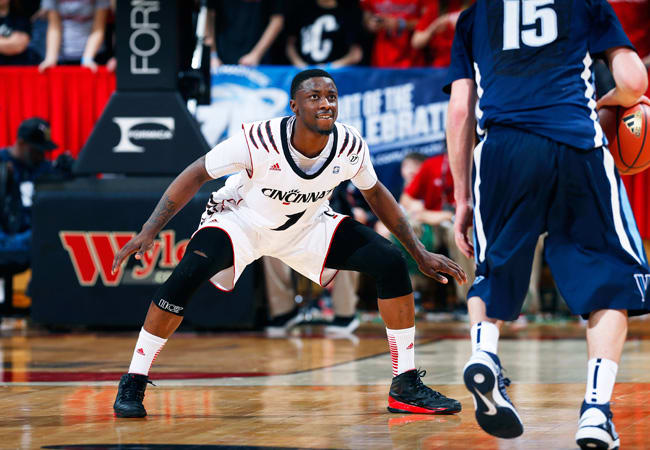
In my opinion, players get the most development from playing half-court man-to-man.
Which is why I always recommend youth teams drop back beyond the half-way line on defense and allow the players to compete in the half-court as much as possible.
2. Takes a Lot of Time for Players to Learn
If you've been following BFC for a while, you'll know we recommend the 50/25/25 practice structure for youth basketball.
- 50% - Skill Development
- 25% - Strategy
- 25% - Small-Sided Games
Depending on the competition and level you're coaching, a lot of coaches only have one hour with their team each week...
Attempting to teach your team a half-court offense and half-court defense is hard enough in that limited amount of time.
Adding a full-court pressure defense will take up even more practice time that could be better spent on other areas of the game.
Types of Full-Court Press:
There are many different full-court presses for a coach to pick from.
Depending on your team's personnel (strengths and weaknesses), some will be better suited to your team than others.
(Note: Not all of the presses listed below are traditional 'full-court' presses. Some are 3/4 court presses. But I assume anyone reading this post will be interested in them too.)
Below, I'll break down the 7 most common...
1. Man-to-Man Press
A man-to-man press involves every defensive player guarding a direct opponent for the entire length of the court.
a. Full-Court Man-to-Man Pressure
Involves every defensive player defending their direct opponent for the entire length of the court.
b. Full-Court Run and Jump Defense
Involves every player starting with a direct opponent in regular man-on-man, except there are several 'Run and Jump' rules which encourage trapping and switching which can disrupt the opponent.
2. Zone Press
There are many variations of a full-court zone press that teams can run depending on the team's personnel and how the coach wants to play.
Each of them has their own strengths and weaknesses, but all of them can be run effectively by the right team.
Here are 6 of the most common variations of the full-court zone:
a. 2-2-1 Press
Involves two players across the free-throw line, two players near half-court, and one player down back as safety.
b. 1-2-1-1 Press
Involves one player at the front defending the inbounds pass, two players across the free-throw line, one player just above the three-point line, and another player down back as safety.
c. 1-3-1 Press
Involves the front defender on the three-point line, three defender across the half-way line, and a safety at the back.
d. 3-1-1 Press
Involves three players across the free-throw line, one player just in front of the half-way line, and a safety at the back.
e. 1-2-2 Press
Involves one player on the free-throw line, two players just before the half-way line, and two players down back.
Deciding Which Press to Implement:
With so many options available, it can be difficult for a coach to decide exactly which full-court press to teach their team.
To help you with this, here are the three main questions to think about...
a. Do you want to play fast or slow?
The first thing you must do is evaluate the speed at which your teams plays their best basketball.
Some teams prefer to play at a fast pace using the 1-2-1-1 press...
Getting steals and then quickly attacking the hoop looking to score or draw the foul.
Other teams prefer to slow the ball down using the 2-2-1 press...
Forcing a turnover and then putting the breaks on and either passing the basketball around the perimeter or working the ball inside to a post player.
b. What are the strengths and weaknesses of your key players?
Next, look at your key players individually...
If you have a great post player who can protect the rim in a two-on-one situation, you might feel comfortable implementing an aggressive press like the 3-1-1 knowing if the first two defensive lines get beat, they will be able to protect the rim.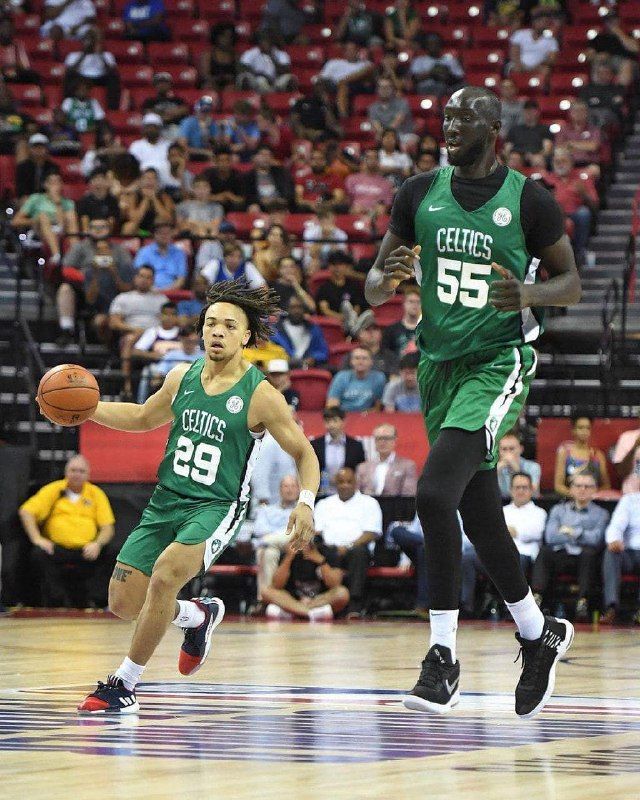
But if you don't, it might be better to use a conservative press like the 1-2-2.
c. Which press will be most effective against your opponent?
When coaching older teams and you have more practice time, you can choose to implement two different full-court presses...
One that speeds up the opposition (e.g. 1-2-1-1) and one that slows them down (e.g. 2-2-1).
Then your team can change it up depending on the opponent.
But during youth basketball, I recommend focusing on the first two questions and selecting a full-court press that fits your team's personnel without worrying about the opposition.
The Most Important Part of a Full-Court Press
I heard this following quote said while watching an online coaching clinic and it's stuck with me ever since...
The desire to sprint back on defense after the press has been broken is the most important part of running a full-court press.
Agreed.
No matter what full-court press you use, it isn't going to work every time your team sets it up.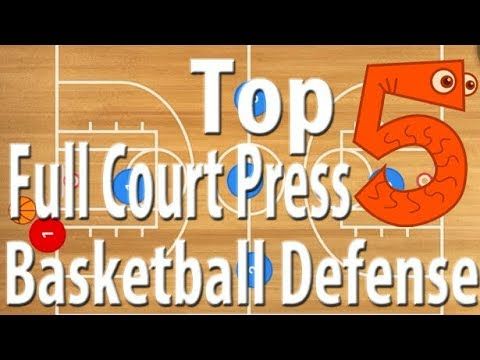
Heck, even the best teams may only force a turnover on less than 25% of possessions.
Which is why every player on the team must be committed to sprinting back on defense immediately after the basketball has passed their defensive line.
Once they're back, players must communicate and use smart rotations to ensure all offensive players are being guarded without allowing an open shot.
Conclusion
There have been times where we’ve ran a full-court press, made zero steals, but the full-court press has been super effective.
"Why?"
Because it prevented the opposition from playing their style of basketball.
Here's the key:
When they want to slow down and control the ball, speed them up.
When they wanted to play fast and score quickly, slow them down.
Implementing one of the full-court presses above will help you do this.
How to Run the 1-2-1-1 Diamond Press Defense
The Diamond press (also called the 3-1-1 or the 1-2-1-1 press) is suited for all levels of play. The press is designed to force turnovers by speeding up the decision making process of the offense. Your team must have quick players with good instincts for this press defense to be effective. Do not run this press if you are not willing to occasionally give up easy baskets.
The press is designed to force turnovers by speeding up the decision making process of the offense. Your team must have quick players with good instincts for this press defense to be effective. Do not run this press if you are not willing to occasionally give up easy baskets.
Quickly transitioning from offense to defense is crucial to prevent miscommunications that result in those easy baskets. Communication in games and practices is vital to make this press effective. Be sure to constantly remind your players that the offense's goal is to get the ball in the middle of the diamond. Getting the ball in the middle of the diamond breaks the press.
Note: Breakthrough Basketball strongly believes all youth level teams should only play man-to-man defense.
X4 is for the post player closest to the basket. X2 and X3 are for the two guards closest to the basket. X1 is for the guard furthest from the basket. X5 is for the post player furthest away from the basket.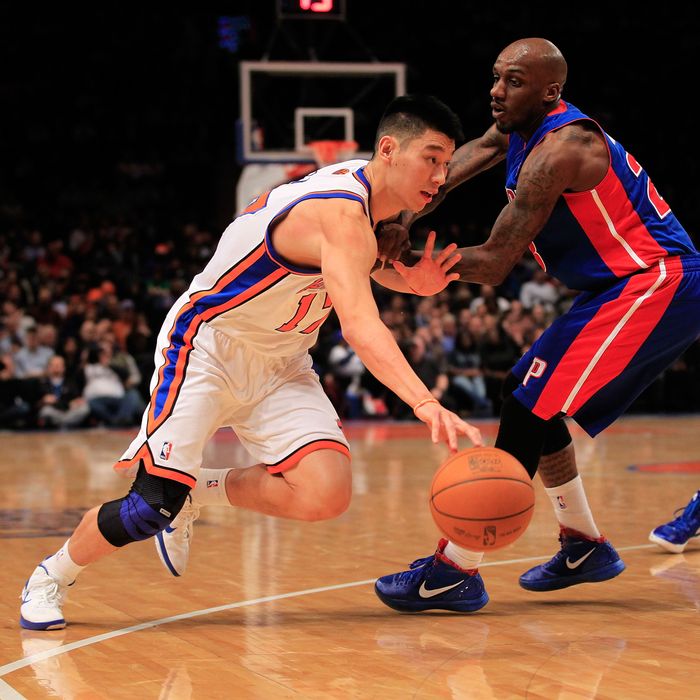
The Diamond press can also be run directly out of a made free throw. The free-throw shooter is up top. X2 and X3 are positioned on the wings. X1 and X5 are at their usual positions.
The offense will likely set up in this press break. Line X1 directly behind 5 and parallel to 3 and 4 to intercept any long passes. X4 denies any inbounds pass to the middle. X2 and X3 look to force the inbounds pass to go into the corners. X5 is the safety in case of a long pass.
As soon as the ball is inbounded to the corner, X2 and X4 must trap immediately. X2 must not give up the sideline.
If the pass is made to 5 or 1, reset to the initial formation.
If the pass is made to 4, X1 looks to cut off the sideline. X3 and X4 sprint back. X2 looks to prevent any passes to the middle by forcing 4 to dribble up the sideline. X1 and X4 trap once the ball crosses half-court.
If the pass is made to 3, the press is broken. Your team must fall back to your base half-court defense. You can still force a turnover if X4 can tip the ball from behind.
Your team must fall back to your base half-court defense. You can still force a turnover if X4 can tip the ball from behind.
1-2-1-1 Diamond Press Tips
Here are five concepts to emphasize when working on this press in practice. A breakdown in any of these areas will lead to the press being broken.
1. Sprint to the nearest spot after a made basket. Get your players to think about pressing as soon as they transition from offense to defense. The press is almost always broken when one or two players fail to remember that their team is running a full-court press.
2. Only trap on the sides. Trapping in the middle is counterproductive because the offense has four directions to escape the trap via the dribble or the pass.
3. Do not allow the ball to go in the middle of the diamond. This will put the defense in an unfavorable position because there is only one player to cover three spots.
4. Keep the ball behind the first line of defense for as long as possible.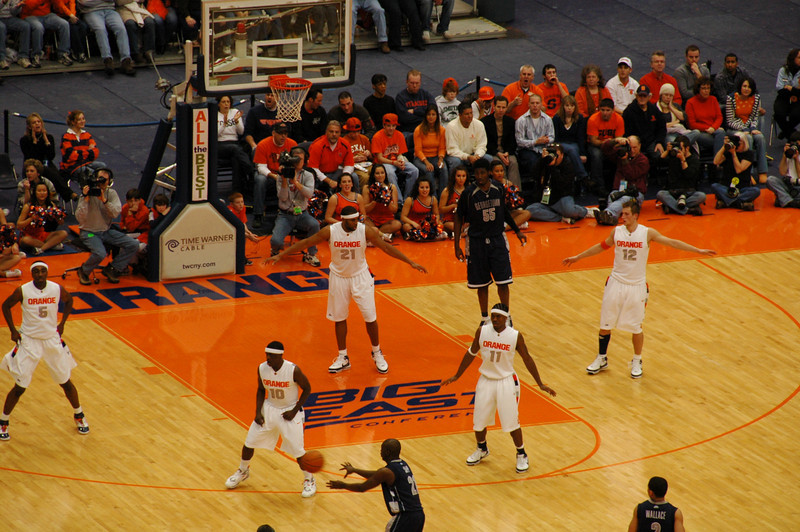 Move your defense back depending on where the offense is initially set up. Always remind your players that the offense has ten seconds to get the ball across half-court.
Move your defense back depending on where the offense is initially set up. Always remind your players that the offense has ten seconds to get the ball across half-court.
5. Have their hands up when trapping the ball. Do not give your opponent an easy target to break the press. Remember that short passes to the middle are the best way to break the Diamond press.
6. Get hands up when closing out to guard a player or trap. By simply getting your hands up, you′ll get numerous deflections and turnovers.
Drills for the 1-2-1-1 Diamond Press
To reinforce these five concepts, here are two simple drills to work on in practice.
Drill 1 - Free Throw Situations
Drill 2 - Half Court Overload
Related Pages and Helpful Resources
Zone Defense Concepts & Tips
Man to Man Defense
Does Your Defense Match Your Purpose? A Look at Defensive Alignments
What do you think? Let us know by leaving your comments, suggestions, and questions. ..
..
Defense in basketball: game tactics, tips
Basketball is a passion for millions of people around the world. Special results in the game to date have been achieved in the United States, it is here that the most powerful NBA league is located. It plays the best of the best. But to get there, you need to work long and hard. Today we will talk about the basics and consider the options for defense in basketball, although the entertainment of the game is the attack, it is the defense that sometimes brings titles in the game! Let's start looking into the issue.
Basketball: defense and offense
The basics of technique are laid in early childhood. It is very important to teach a child who attends the basketball section how to attack and defend in the game. Moreover, you need to do it in such a way that the player understands that basketball is a team game, and not an individual running around with the ball around the court in an attempt to attack the opponent's basket against all odds. Unfortunately, in the early stages of training, this trend is visible in more than half of the novice players.
Unfortunately, in the early stages of training, this trend is visible in more than half of the novice players.
A good coach is someone who helps a child to develop technique. Defense in basketball is an integral part of the game and should not be ignored or neglected. This is an important point. By the way, it is worth noting that defensive actions can be very spectacular and spectacular. In general, in basketball everything depends on the players, their technique and grace, and not on the tactical scheme or role.
Defense Tactics in Basketball
There are three main defensive tactics in modern basketball. Of course, there are various combinations and variations of these tactics, but the fundamental ones are:
- zone defense in basketball;
- pressing;
- personal defensive actions (personal guardianship).
Let's take a closer look at each variant of tactics and identify the features.
Zone
Basketball defense in zone defense tactics implies the game of each defense player in his allotted zone. That is, defense players play only on their own area of the site and do not leave it. Defensive actions are carried out against the opponent who enters this area of the site. Leaving your zone is only possible to secure a teammate who has “failed” in defense.
That is, defense players play only on their own area of the site and do not leave it. Defensive actions are carried out against the opponent who enters this area of the site. Leaving your zone is only possible to secure a teammate who has “failed” in defense.
Amateur teams use this defensive tactic, but not in the very early stages. Zone defense is a rather complex interaction of players even at the aforementioned amateur level of play, not to mention professional teams.
Zone defense is a way to fight against passes under the basket and provoke an opponent to shoot from a distance. Also, this type of protection significantly compensates for the reduced athletic qualities of the players. Zone defense means fewer moves for the defending side, which means more energy reserves for the rest of the game.
If we talk about the weaknesses of such a defense, then this can be attributed to the difficulty for inexperienced defenders to determine the joints of zones with a teammate.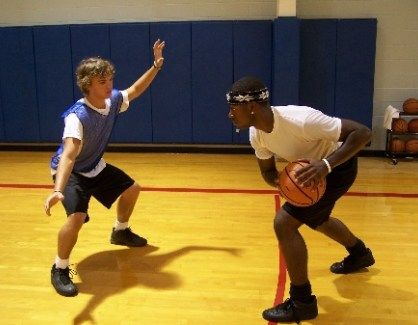 For this reason, none of the defenders may not reach the ball, that is, the opponent will make a throw without resistance.
For this reason, none of the defenders may not reach the ball, that is, the opponent will make a throw without resistance.
Zone defense is an ineffective way of defending against teams with set three-point shots. Also, the opponent's coach can guess such an option when his best player will attack from the zone where the opponent's weakest defender is defending.
Personal defense (personal defense)
In this case, each defensive player plays against the opponent assigned to him, regardless of the location in the attacking actions of the latter. The defending player can switch to another attacking player if a teammate makes a mistake and the opponent goes to the pass. Personal defense is very common at the amateur level of the game, although professional teams also use this defensive tactic.
The personal defense is well proven for defending against teams that like to shoot from medium to long distances. But personal defense is not very good against teams that make a lot of passes under the basket. With the help of passes around the perimeter, the opponent can stretch the defenders around the court, which will be the preparation and release of the zone for the partner's pass. When the defenders are stretched enough, there will be a pass to a player who will make a pass and with a high probability will score the ball into the basket.
With the help of passes around the perimeter, the opponent can stretch the defenders around the court, which will be the preparation and release of the zone for the partner's pass. When the defenders are stretched enough, there will be a pass to a player who will make a pass and with a high probability will score the ball into the basket.
Pressing
A very aggressive tactic that requires good physical condition from defensive players. Defense in this case starts from the front line of the opponent. In other words, after a goal is scored, the players do not go to their own half of the court, but begin to actively interfere with the opponent's game right on his territory. To some extent, this defensive tactic in basketball can be considered an aggressive form of personal defense.
Such protection is chosen either by sufficiently trained amateur teams, or by professional ones. This tactic can completely break the opponent's game if we are talking about amateur basketball due to its rare use and lack of experience in playing against such actions. In fact, pressing is not only a defensive tactic, but also an attacking one.
In fact, pressing is not only a defensive tactic, but also an attacking one.
Choice of tactics
The coach is always responsible for the choice of tactics in the game, he sees what is happening on the court from the outside and understands in the best way how to act in order to keep the winning score or eliminate the gap from the opponent on points.
Based on his experience, a coach can change tactical actions in defense in basketball several times not per game, but per quarter! This exhausts the opponent, gives him problems, because the opponent is also forced to change his style of play for each type of defense.
Modern tactics for professional teams are hybrids of several standard types of defense. For example, one player on the defending team may use a personal defensive tactic against the offensive leader, while the rest of the players may play a zone defense method. There are a lot of variations and modifications of defense in modern basketball, especially when it comes to the games of professional players in the world's leading leagues!
Tribute to the times
Today, when players have a very high level of training, and equipment and equipment for playing at the highest level, it becomes more and more difficult to defend, as the speed and dynamics of events on the game floor sometimes go off scale. Defense and offense in basketball are an arms race on the playground.
Defense and offense in basketball are an arms race on the playground.
Some teams prefer to play as the first number, while others play from the opponent and from defense. These are just the features of the tactics and style of playing that the team's mentor promotes. This is not to say that an aggressive attack is always a victory, or a deep defense and toughness of the game is the right path to the championship.
Everything is very complicated and individual, not only for a particular opponent, but even for a particular period of time in the same game. Basketball at the highest level is simply amazing fiction, this applies to actions both in attack and in defense.
Advice
The coach distributes the necessary advice for defensive actions and does it during training. In general, training should be such that the defense technique in basketball is brought to automatism. This is achieved by training and more training! But there are some general tips to be aware of, especially in the early stages of teaching basketball defense.
Don't throw too much at a player when you're on the defensive. This can lead to a technical player passing you easily on the dribble. Throw forward to intercept only when you are absolutely sure that you can intercept the ball. Interceptions are best made by nimble and nimble point guards who defend farther from their basket.
Always try to belay your partner. Basketball is a team game, and it is impossible without mutual assistance. But you need to insure your partner wisely, because when you switch from your player (or from your defense zone) when securing, you throw your player (or your site), and this is a free zone, that is, options for technically playing the ball in attack. Insure wisely, trying to outwit your opponent. For example, advance on an opponent who was being guarded by your partner but failed, and then, if you see that the opponent with the ball is trying to play an extra player, go back to your abandoned opponent and intercept the ball. In general, all this will come with experience.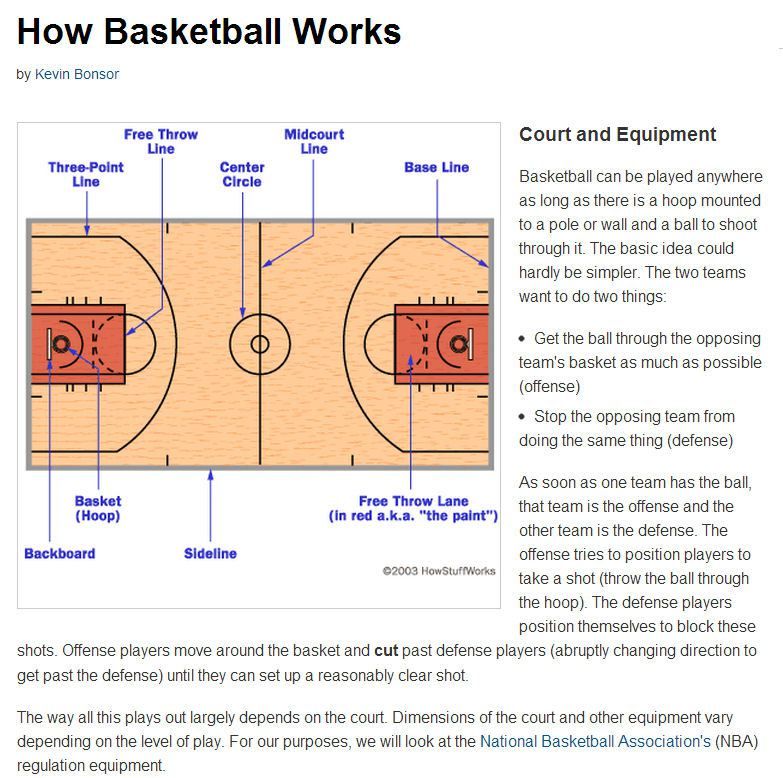
As a rule, for the very beginning basketball players, the coach does not choose pressing as a style of play in defense, because such a defensive action scheme requires very serious physical preparation and the most coordinated team actions. And at the initial level, amateur teams do not have such skills.
Well, perhaps the most correct and best advice is training. Exactly exhausting training is the key to a clear and well-coordinated work of the team, as well as verified actions in defense or attack. Training, skill and talent - this is a great combination for real champion players!
Significance of a coach
This subsection is relevant only for amateur teams, because such misunderstandings cannot exist in professional basketball. You should always listen to your coach and quickly change tactics at his direction. Strict observance of this rule can decide the outcome of the game.
Total
Defense is an integral part of any outdoor team ball game. Basketball is no exception to these rules. In many ways, defensive actions determine the outcome of the game. In fact, the defense of one team is the attack of the second team. Defense and attack are inseparable components, which is why defense in basketball should not be underestimated.
Basketball is no exception to these rules. In many ways, defensive actions determine the outcome of the game. In fact, the defense of one team is the attack of the second team. Defense and attack are inseparable components, which is why defense in basketball should not be underestimated.
Properly chosen basketball tactics are half the team's success. The second half is the interactions within it and the personal qualities of the players. Of course, there is always some luck, but you can't win a title on luck alone!
Zone defense is bad for kids basketball
March 2, 2016 Coach Mac
The coach emailed me last week and asked (briefly):
"Hi. This week we will be playing against a team that plays a tight zone 2- 3 the whole game. Their players are much higher than ours, and they will not give up this protection. What should we do?" Do you want to know what my answer was? - "Pray your team can hit the basket from a distance." Obviously, this was not my whole answer, but it was his main point.
Not long ago I wrote about how to beat a 2-3 zone defense, and that the strategy for attacking a zone requires the defense to react to and defend against long throws (I will talk about it throughout the article).
If the defense plays close to the rim all the time and is not concerned with defending against long shots (as most kid teams do), these strategies become very difficult to implement. Therefore, I decided to create this material, and share with you my thoughts on why coaches find zone defense effective and therefore use it, and ... how it harms the game of children's teams. In addition, I am ready to discuss all the arguments used by coaches in favor of zone defense. In this article, I will mainly refer to the 2-3 2-3 zone defense because it is by far the most popular zone in children's basketball.
Why zone defense is effective in children's basketball
I'm not going to argue that zone defense is very effective at the level of children's basketball.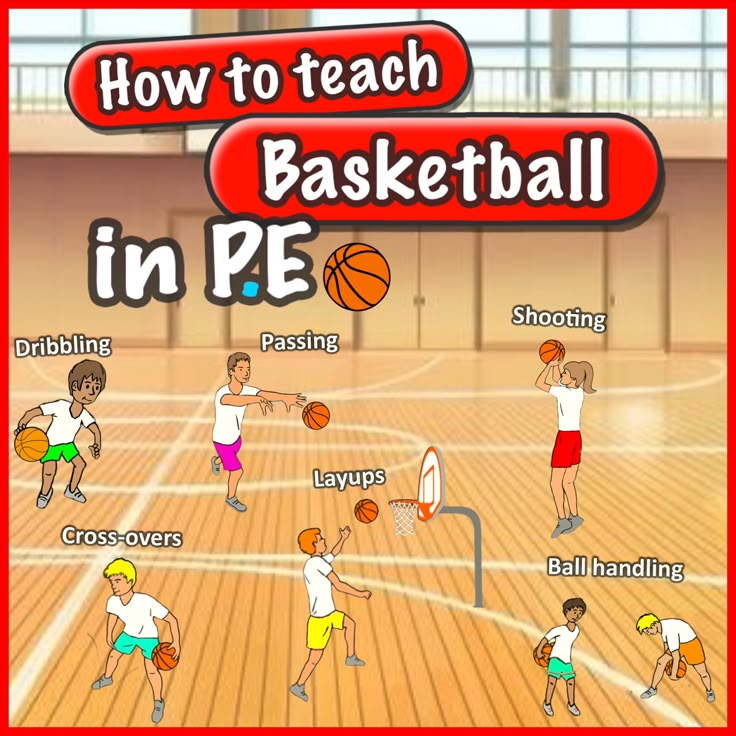 This is a 100% undeniable factor. Coaches use zone defense as it works great against kid teams.
This is a 100% undeniable factor. Coaches use zone defense as it works great against kid teams.
Here are the two main reasons why:
1. Players are forced to shoot from long distances
We all know that most of the points scored in children's basketball come from shooting from under the basket.
In zone defense, the defensive team packs all of its players in the paint (into the 3 second zone) and removes the run lanes to the basket.
Which attack option is left for the attacking team? Long and medium throws.
And since the attacking team cannot get to the basket and make a good shot, most young players try to shoot the ball from a distance, while praying that the shots will be successful. You understand that not many of these attempts will be successful, because in order to make a long shot technically correct, most young players are simply not physically developed enough, they do not have enough strength to shoot from a distance properly.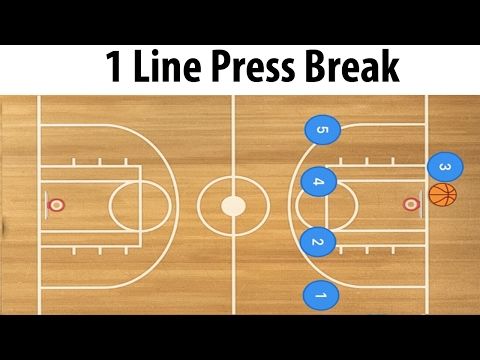
But since that's the only way to make a free throw against the zone, they do it.
2. Players cannot make long side passes
Young players do not have enough strength to make this pass because a "side pass" or "flip" is a pass to a teammate that is made from one side of the court to the other.
The offensive players are not physically strong enough to make this long pass, and this allows the defense to move to the other side without problems when the offense uses only short passes.
Now that you understand how this works, let's talk about why coaches use the zone...
Why do coaches use the zone defense?
In my opinion, there are three main reasons why coaches play zone defense in children's basketball. And surprisingly, they are not all very scary:
1. To win games.
This is the number one reason coaches use zone defense in my opinion.
The reasons why coaches want to win can vary greatly. Some reasons are nobler than others. Here are some of the reasons why coaches want to win:
Some reasons are nobler than others. Here are some of the reasons why coaches want to win:
1. To feed their egos.
2. To keep your team competitive.
3. To get recognition from others.
4. To keep players from leaving their team.
5. To make players and parents happy.
As you can see, not all of the reasons on this list are negative.
2. To feel that they affect the game.
I openly admit that I had this feeling when I first started coaching. When your team plays the zone, you look much smarter than the coach on the other side simply because it shows the weaknesses of the opposing team's offense. Your players look organized on the court, the zone is active, the opposition is trying to score, etc.
It's incredibly easy to get caught up in the notion that you're a good coach and everything you do is a big deal that puts the opposing players in a limited area so that the opposing player can only shoot from a distance and you made them stand there. If you play player versus player defense it doesn't look like well organized and it's much more difficult to play assist defense with it and the opponent will score easy goals into the basket, but still your team with this defense gets more useful experience for its further development.
If you play player versus player defense it doesn't look like well organized and it's much more difficult to play assist defense with it and the opponent will score easy goals into the basket, but still your team with this defense gets more useful experience for its further development.
All coaches want to show how they affect the game, but it's important that we all keep in mind what's best for the future development of your team.
3. To stay competitive.
Whether you like it or not, some coaches really feel compelled to use zone defense to stay competitive in their league with other teams. This reason, I can understand, and this is a weighty argument in favor of using zone protection. I think we can all agree that no kid's basketball team should lose by close to 50 points. Using zone defense can change a great opponent's game that hurts your players into one that's more even and more comfortable for your team.
But if you're forced to use this zone strategy to stay competitive, one thing is clear: your team is not competing at your level.
You don't have to use the zone to be competitive, and if your team is playing like this, you need to find another league, improve the technique and physical condition of the team's players, or figure out what else is needed to solve this problem. Playing zone defense is not the best long-term answer to your problems.
4 reasons why zone defense is bad for kids basketball.
All youth coaches must remember that their focus must be on the future of the players they coach. I assure you that in a few years no one will remember that you won the 10-year-old championship by using zone defense, forcing opponents to shoot from a distance. Nobody. The first three reasons I'm talking about are the same ones Tyler writes about in his article here. I added a fourth reason, but I fully agree with the first three and would like to share my thoughts on them too. Here are 4 main reasons why zone defense is terrible for kids basketball.
1. Zone defense develops bad skills in players
Zone defense develops bad skills in players
Before amateur zone coaches jump in front of me and say, “Good zone defense also trains players in personal defense principles!”, I will say: “Believe me, I understand this is!" But I will add that zone defense also introduces a lot of bad skills that players, playing the zone, will only exacerbate, and I am not suggesting that the player playing the zone will not learn anything that will help him in personal defense. They still need to take the defensive position in time and correctly, they still need to communicate, they still need to play defensive assistance, etc. And let me make the point: these are all skills, really. Ask any coach who is given the unenviable task of turning a life zone player into a lifeguard and he will tell you that some of these habits are really, really hard to break.
Tyler, whose knowledge in basketball I respect very much, came up with a list of 15 bad defensive habits adult protection . ..
..
1. The player’s defense with the ball
2. Stand and observe the ball
3. Bad technician 3. entering a defensive position (closeout technique)
4. Little responsibility
5. Lack of communication
6. Minimal defensive movements 7. Weak defensive skills in different positions and against different players
8. Weak communication skills in the transition from offense to defense
9. Weak skills in defending long shots
10. Decreased responsibility when placing the back in rebounding
11. Fewer decisions during the game on the help side
9. Decreased rotation in defense 10
13. Fewer opportunities to know acceptable defensive risk
14. Minimal screening opportunities
15. Fewer opportunities for big players to defend against the ball carrier on the perimeter.
2. Zone defense also hinders the development of attacking team players.
Quick note: If winning is your number one priority, then this point will be incredibly difficult for you to understand.
Playing zone defense in children's basketball, you do a disservice to the players of the attacking team.
But why should you worry about that? After all, your job is to stop the other team and prevent them from hitting your basket, not to help them. Correctly? But… Coaches need to understand that we are all here to help develop players for the future. Do you really want to send 8-year-old opposing players to shoot from long range so that they can't shoot into your basket from close range and thus win the game? Because, unfortunately, that's the only thing zone defense allows them to do. And please don't think I'm saying that you should sit back and let the other team kick your basket, I'm not completely crazy. But I think we need to give the offensive team a chance to play smart basketball and try different offensive opportunities that zone defense doesn't allow. When playing against the zone, players cannot pass with the ball to the basket, their dashes are useless because the paint is occupied by 5 defenders, it is pointless to put up screens to open up because the defense leaves them open on the perimeter and waits for them to shoot balls from a distance, and many other lost opportunities for offensive development. Again, defensive skills - I understand that when playing against the zone, players will learn and grow, but they will learn things that will prepare them for the future in half as much and slower than what they would have learned, playing against personal defense.
Again, defensive skills - I understand that when playing against the zone, players will learn and grow, but they will learn things that will prepare them for the future in half as much and slower than what they would have learned, playing against personal defense.
3. Zone defense does not prepare players for the next level.
One of the most important tasks of a children's basketball coach is preparing their players for the next level of basketball. Here is a super important fact that has been shared by many great coaches: It will be much easier for a player who was trained in personal defense when he was young to move to the zone than a player who played exclusively in zone defense in a young reward, to move to personal defense, when he gets older. So it comes down to a question; do you want your players to be better prepared for the future, or to win by any means now? There's one more thing you can't help but notice: the more competitive the game gets, and the more skillful the players get, the less zone defense gets involved. This is because zone defense works great against kids teams that don't have the right skills and conditioning, but is often helpless against players with a lot of basketball experience. Thus, in order to give your players the best chance of success at a higher level, it is necessary to be competent in man-to-man defense.
This is because zone defense works great against kids teams that don't have the right skills and conditioning, but is often helpless against players with a lot of basketball experience. Thus, in order to give your players the best chance of success at a higher level, it is necessary to be competent in man-to-man defense.
4. Zone defense doesn't make basketball attractive
This is probably the most compelling reason: By playing zone defense, you are stealing from players the enjoyment that basketball can give them. With zone defense, there are few - one of the attackers is able to score the ball into the basket, both teams make loss after loss, as the players are forced to shoot from long distances, having no hope of hitting the basket!
Does it sound like basketball fun to you? It sounds terrible to me - we as coaches need to give all players the chance to fall in love with the game of basketball the way we did when we were young.
10 Reasons coaches use for zone defenses and why they are wrong.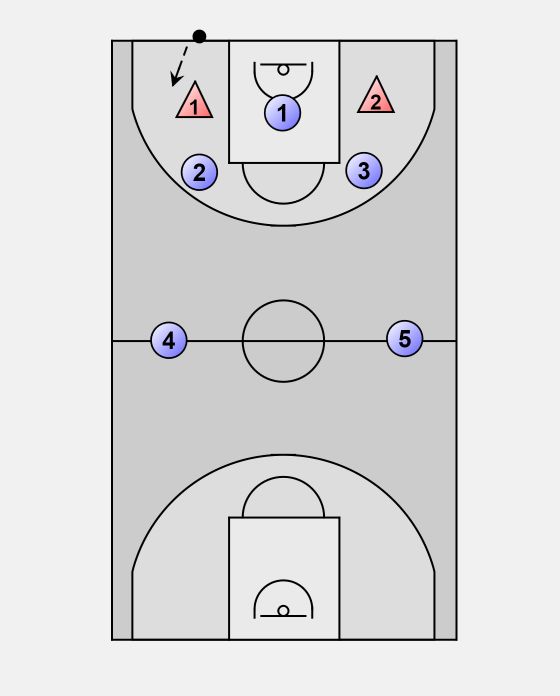
I know every coaching argument in favor of playing zone defenses. Some of them are quite reasonable, others I find to be ignorant nonsense. And here I want to share my thoughts on some of these arguments.
1. "The real problem is not the zone defense, but that coaches should teach offense against the zone better."
The first thing coaches need to understand about offense against the zone is that not all shots against the zone will be 3-point shots, although zone citation is built with the assumption that they will be used against it. About three-pointers, of course, this is a weighty argument, but for a higher level, and not at the level of children's basketball. And that's because if your team can't shoot from the perimeter (and most kid teams can't), then the defense won't expand to counter those 3-point shots that open gaps in the zone. Instead, all 5 defenders will stand inside the 3-point line and wait for you to lubricate the next roll without resistance. And coaches who advocate zone defense will say "it's an offense against the zone, not a zone defense" issue, giving you two pieces of advice:
And coaches who advocate zone defense will say "it's an offense against the zone, not a zone defense" issue, giving you two pieces of advice:
a. "Your team needs to learn how to move the ball better!" But moving the ball doesn't accomplish much - most kid teams have no problem passing the ball against a tight 2-3 zone, and in fact, they often do it too easily!
If an attacking player is on the three-point line, there is often no defender next to him, all the defenders are in the box or one step behind it, and they certainly will not put pressure on the ball. Why should they? The defense knows your 3-point shots are off target and don't really care how fast or how well you move the ball all around. You can pass him side to side 5 times and the only thing the defense will move is their heads - they will just stand there watching the passes and wait in the paint when you throw to pick it up on the bounce. So, there is no chance that your fantastic movement of the ball will help him penetrate the zone, because all 5 defenders are located inside the penalty area so that they can even touch each other with their hands.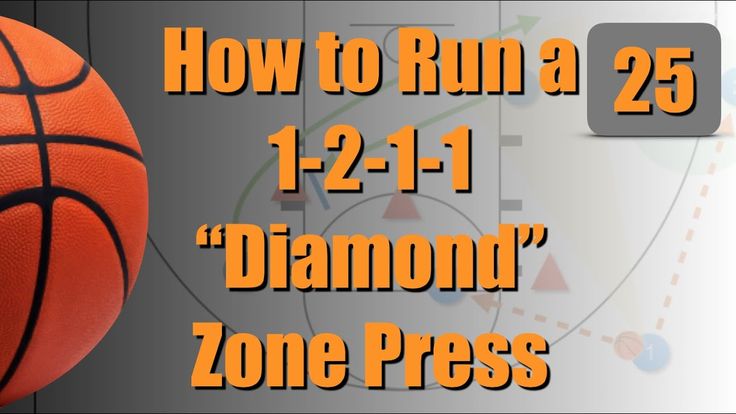
b. Try using screens against the zone. It always works! "
Screening against the zone doesn't help much. I've heard a lot of advice for kid coaches to use screens against the zone, but I still can't figure out exactly what they do. Maybe a screen will help one of the the best players will get the ball for an open shot on the wing, but the offensive player will definitely not get the opportunity to go to the basket and shoot from close range. who use the screen and will not create a gap in the defense, they will continue to stay inside the box, and the attacking team will still have no problem getting the ball for an open long shot. but the players of the attacking team are unable to successfully hit the basket from these positions.0003
2. "Using the zone allows the team with less talent not to lose the game by 50 points."
I've talked about this earlier in this article, so I'll be brief: it's the only valid argument for zone defense. If your team loses by such a wide margin in every game, both the players and parents will get tired of such losses soon, and they will start moving in the direction of the other team. And unfortunately, the best players will leave first, so if you're losing by a wide margin every game, it would be much better for you and your team to find a new league to compete rather than play zone defense every game. .
If your team loses by such a wide margin in every game, both the players and parents will get tired of such losses soon, and they will start moving in the direction of the other team. And unfortunately, the best players will leave first, so if you're losing by a wide margin every game, it would be much better for you and your team to find a new league to compete rather than play zone defense every game. .
3. "Zone defense is just another defensive option in basketball. Young players need to learn all defensive formations."
The weakness of this argument becomes apparent if you remember a simple quote from the great Don Meyer. "When you add, you must subtract" - Don Meyer
By teaching your players additional defense options as a child, you are stealing from them, and from yourself, valuable time that could be used to work on other aspects of the game and develop many players other useful skills. Do you really think that implementing a zone defense is the most efficient use of training time each week? But it, time, is practically always limited - coaches always experience a lack of it to solve their problems with the players.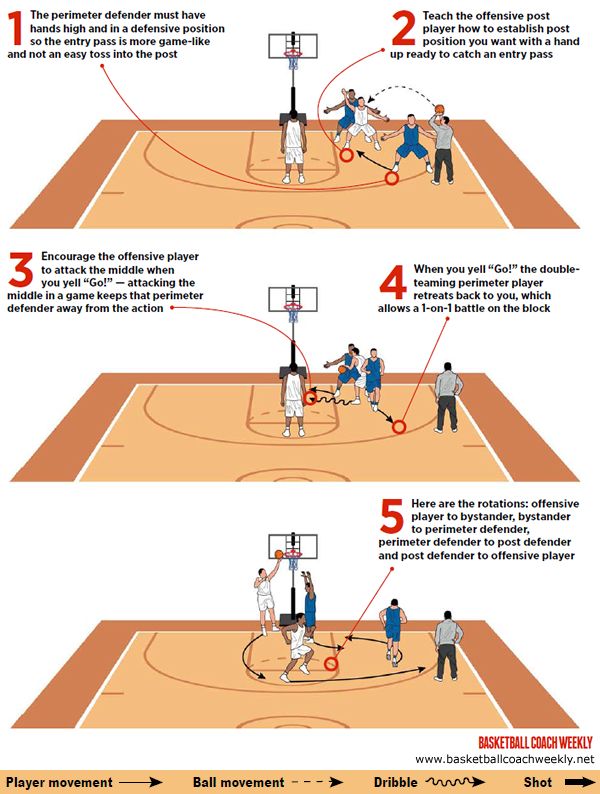
4. "I don't have enough time to teach the players about personal defense."
When teams don't have enough training time, they often resort to using zone defense. I understand this: it's much easier to have a player stand in one position close to the basket than it is to force the players to position themselves correctly between their player and the basket for the entire duration of the game.
But if you don't have time to teach players personal defense now, when will they have time to learn about it? It is very important to teach players personal defense as early as possible, that is, from the very beginning of their training. In my opinion, this is a prime example of how important it is for the future growth of your players to instill the necessary defensive skills in him at a young age. And explaining to your players how to take a defensive stance against one of the attacking players and stay in a position between him and the basket all the time is not difficult.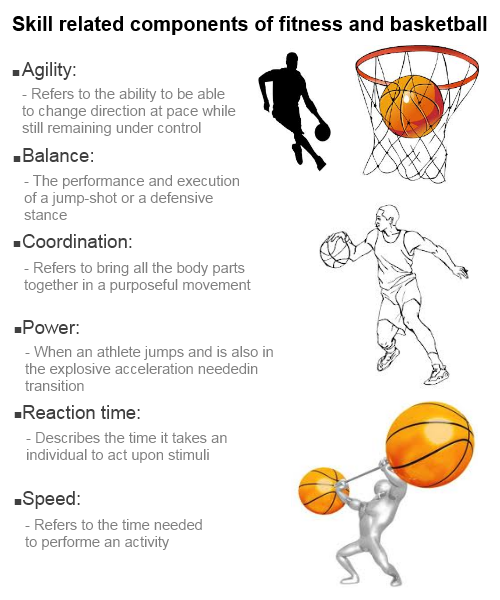
Of course, they will get lost many times and your team will miss some easy shots to their basket, but gradually, with experience, they will improve their defense and become more confident in their defensive actions. And after they get a clear understanding of the protection of their wards players, you need to start leading them to an understanding of helping partners in defense. Teaching your players these little concepts should be done during small games and during pre- and post-game conversations.
5. "I have a weak player, and he needs to be hidden in the zone."
I have a feeling that many coaches will cringe at this argument... How can hiding a bad defender in the zone help him today and especially in his personal defense in the future? This is a clear example of when the coach considered today's win more important than the development of the player. Give a bad defender the opportunity to get this experience as early as possible, and this is the only way he will be able to improve. He is poor defensively, most likely because his previous coach only played the zone, not caring about his future development.
He is poor defensively, most likely because his previous coach only played the zone, not caring about his future development.
6. "A good zone defense teaches the principles of man to man defense. Players still get close out, players still have to help, etc."
I have previously discussed this topic in the article, but let's quickly go over it again to make my thoughts clearer. Zone defense does teach some principles of personal defense, rightly so. But it is clear that personal defense teaches defensive principles much better than zone defense does. Thus, if things are not so bad in the zone, then personal protection is a much better alternative. To me, this argument is only used as an excuse to play zone defense when the coach wants to win the game.
7. "Teach your team to shoot the ball better and then we wouldn't be able to play the zone."
What a terrible argument. Let's remember that many players, when using a zone defense and attacking against a zone defense, will need to do so for the first couple of years of their basketball career. How long does it take to become a good long range sniper? At least a few years. How long will it take to implement a zone defense that stands in the penalty area and moves little? 1 - 2 minutes. And let's also not forget that, regardless of age, many players simply cannot physically shoot the ball from a distance, no matter how much practice they have had!
How long does it take to become a good long range sniper? At least a few years. How long will it take to implement a zone defense that stands in the penalty area and moves little? 1 - 2 minutes. And let's also not forget that, regardless of age, many players simply cannot physically shoot the ball from a distance, no matter how much practice they have had!
8. "My players probably won't play college or university basketball, so it doesn't matter."
We've all heard of coaches who supposedly think they can predict the future of 8 year old players: "They'll never be good enough. They're too short" or "Look, this kid could be a superstar in 10 years." I don't understand how a coach can so confidently draw such conclusions about very young players. Basketball is replete with tales of players who looked weak or mediocre as children but went on to great professional careers. Michael Jordan didn't achieve great success on the team in either his high school or sophomore year at university, and is now known as the best basketball player who ever lived. Hakeem Olajuwon couldn't successfully pick up balls until he was 15 years old, but is now considered one of the very best centers to ever play the game. Tim Duncan came to basketball from swimming in high school, and now he's probably the strongest No. 4 of all time. And there are many more such stories. No coach can predict which players are going to fall in love with basketball and work slavishly to improve. No coach can predict which player will have a huge surge in their subsequent physical development. I'm not excluding any player!
Hakeem Olajuwon couldn't successfully pick up balls until he was 15 years old, but is now considered one of the very best centers to ever play the game. Tim Duncan came to basketball from swimming in high school, and now he's probably the strongest No. 4 of all time. And there are many more such stories. No coach can predict which players are going to fall in love with basketball and work slavishly to improve. No coach can predict which player will have a huge surge in their subsequent physical development. I'm not excluding any player!
9. "By learning to play zone defense, players will learn how to use it, which will help them when they play against the zone in the future."
As we have said many times in this article, zone defense in kids basketball is not played the way real zone defense should be played. Defenders don't really get into defensive positions, they fake out on the ball because they know that shots won't work, cross passes won't reach their destinations, etc. Not many players learn good zone defense by playing it in kids basketball. And this fact alone does not justify taking time for other necessary things that players could work on at this time for their development.
Not many players learn good zone defense by playing it in kids basketball. And this fact alone does not justify taking time for other necessary things that players could work on at this time for their development.
10. "We play the system that works best for our players."
Another classic case of a coach who puts winning in any way above individual development in childhood when winning should not be the number one priority. If your players can't play personal defense at the current level, what chance will they have of playing it at the next level? Remember, as players develop and reach higher levels of competition, they will play much more personal defense. We must give all players the opportunity to try out personal defense so that they are ready to defend well when they rise to the next level of the game. And don't get me wrong, I love writing and talking about all types of zone defenses and especially love breaking them down into simple guides that coaches can use to help their team. But these guides must be used according to the age of the players and in the proper way. And I don't recommend them to coaches up to the high school level.
But these guides must be used according to the age of the players and in the proper way. And I don't recommend them to coaches up to the high school level.
In the past, I have not done much work to make my thoughts clear, but I will strive to do it much harder in the future.
Looking ahead, what should be done with zone defense in youth basketball?
I've seen many leagues try to fix zone usage issues with restrictions such as:
• A team can only use zone defense when they are down 10 points or more.
• A team may only use zone defense for 10 minutes in one of the game periods.
I don't like these kinds of restrictions and I don't think they are suitable for children's basketball. I completely agree with Bob Bigelow in his article on improving children's basketball (I encourage you to read his thoughts in full). In all games for players up to the high school level, only the player's half-court player must defend.
Bob asked professional coaches in over 1,000 high schools and colleges with the same question: "At what basketball level should we start teaching non-personal defense. In other words; zones, pressing, traps, boxes, triangle and two, and any other defensive options that kid trainers, our future Hall of Famers, can come up with?"
In other words; zones, pressing, traps, boxes, triangle and two, and any other defensive options that kid trainers, our future Hall of Famers, can come up with?"
The answer to this question was unequivocal (99%) - High School and Junior Age (these are 15-16 year olds, note for readers who do not have children in the American school system.) And this should be mandatory in all games for players up to the level of high school - to defend with personal protection in half of the court. I completely agree with you Bob.
Conclusion
I asked if my opinion on "zone defense in kids basketball" is needed, since there are already other excellent articles on this topic and mostly with the same points, such as this post by Tyler Coston or this post by Breakthrough Basketball And was forced to do so because: 1. I think there were a few vital moments that were missing 2. I wanted all BFC readers to know my thoughts on this 3. I wanted to argue with the arguments made by the coaches in favor of the zone.